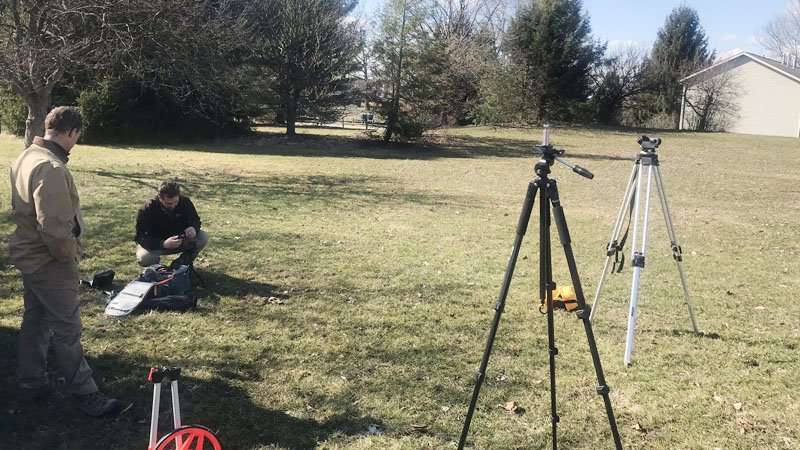
In an area where horse-drawn buggies still are a popular form of transportation, Ohio State Agricultural and Technical Institute is about to go high-tech with the way it delivers instruction to its students.
Like just about every college, university, high school, junior high and elementary school in the country, OSU-ATI is taking its curriculum - turf and otherwise - entirely online for the spring semester.
Zane Raudenbush, Ph.D., and Ed Nangle, Ph.D., who run the turf program at ATI have been busy preparing for Monday's rollout of online-only education as schools nationwide do their part to help limit the spread of the COVID-19 virus.
Keep it simple. Don't spend hours or days learning how to do this. Universities have a lot of resources to help you set this up, or even do it for you."
Ohio State's main campus in Columbus has a long history of delivering classes online. ATI, which is home to one of the country's most highly regarded two-year turf programs and relies heavily on field work and labs, does not have the same tradition of teaching through technology. The entire OSU system extended spring break for an extra week to allow instructors time to get ready for online-only instruction that begins next week.
"This is unprecedented territory," Raudenbush said.
"We have to make the best of this and move on."
Like many schools, ATI already utilizes online platforms like Canvas and Zoom. Now, it's a matter of creating content and converting it to a system that is simple to use while also giving students a quality educational experience.
For Raudenbush, that will mean recording lectures and making videos of work in the field.
His concern isn't necessarily about the quality of work he produces, but the quality of the educational experience for students who enrolled at ATI for face-to-face interaction and, through no one's fault, are cast into a world of distance learning.
"My real concern is that not every student is well adapted to receive content online," Raudenbush said. "Data shows not everyone succeeds online. Some do fine, some don't do so well. That is my concern."
My real concern is that not every student is well adapted to receive content online. Data shows not everyone succeeds online. Some do fine, some don't do so well. That is my concern."
An hour-and-a-half from Wooster in Columbus, turfgrass specialist Pam Sherratt is teaching HCS 2200 - World of Plants - a face-to-face class with 140 students that she is converting to online curriculum by Monday. Sherratt, who has been teaching the next generation of sports turf managers at OSU for 21 years, has a lot of experience with distance education. She also is teaching another course this year that is online-only, HCS 3370 - Sports Turf Management, which has 415 students logging in from around the world. Sherratt's colleague, Karl Danneberger, Ph.D., implemented distance learning in Columbus in 2007 with a golf turf certificate program
For the students in her World of Plants class, Sherratt plans to convert her face-to-face class to online by meeting weekly with students through Zoom, recording lectures, uploading slideshows with audio and a lot of practice tests and study guides.
When TurfNet spoke with her, Sherratt still wasn't sure how she would deliver exams, but said there are plenty of options available through the university's Carmen system that ensure students are not getting any outside help during a test.
"We're going to have our first Zoom meeting on Tuesday," she said. "I'm already teaching a class online, so this is not going to be a big deal for me."
What Sherratt, who is known as "Turf Mum" by her students, will miss is the personal interaction that comes with lab work and field trips.
"Every year, I give my students an aloe plant. And every year many of my old students text me a picture to show me they still have it," she said. "We do other things, like tour the Chadwick Arboretum, and we won't be able to do that."
Their lives have been disrupted enough. Many students are working three jobs just to be here and now they've probably lost all of them."
Like Raudenbush, Sherratt is keeping in mind that this new world she, her colleagues and their students have been cast into is by no one's choice, and she plans to teach, test and grade accordingly.
"Their lives have been disrupted enough," she said. "Many students are working three jobs just to be here and now they've probably lost all of them."
Administrators at Auburn University told instructors to be prepared to migrate to online-only instruction before a decision was made to move in that direction. That didn't affect things too much for Beth Guertal, Ph.D., who is teaching Soil Fertility and Nutrient Management this semester.
"Whenever I teach a class, I also teach it online," she said. "There are already 15 people taking that class from all over the world."
She uses Canvas and Panopto to deliver lectures, assignments and extra credit to her students.
"It's not a lot unlike what TurfNet does with webinars," she said.
Exams are handled through Honor Lock, an proctored online service.
Although distance learning is a proven commodity at Auburn, it has its downside, she said.
"You don't get to know the students," she said. "And you don't get to identify which ones might make good graduate students."
For those who might not be up to speed on how to convert traditionally face-to-face curriculum to an online format, Guertal says most universities now have entire departments to assist professors with developing and managing online content.
"Keep it simple," she said. "Don't spend hours or days learning how to do this. Universities have a lot of resources to help you set this up, or even do it for you."

